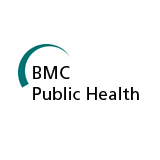
Methods: Systematic review and meta-analysis. Data sources included Cochrane Central Register of Controlled Trials (CENTRAL) in the Cochrane Library, PubMed, CINHAL and WHO international clinical trials registry. Only randomized trials were included. Studies of children in hospital settings were excluded. The comparison group received no application to the umbilical cord (dry cord care), no intervention, or a non-CHX intervention. Primary outcomes were omphalitis and all-cause neonatal mortality.
Results: There were three cluster-randomised community trials (total participants 54,624) conducted in Nepal, Bangladesh and Pakistan that assessed impact of CHX application to the newborn umbilical cord for prevention of cord infection and mortality. Application of any CHX to the umbilical cord of the newborn led to a 23% reduction in all-cause neonatal mortality in the intervention group compared to control [RR 0.77, 95 % CI 0.63, 0.94; random effects model, I2=50 %]. The reduction in omphalitis ranged from 27 % to 56 % compared to control group epending on severity of infection. Based on CHERG rules, effect size for all-cause mortality was used for inclusion to LiST model as a proxy for sepsis specific mortality.